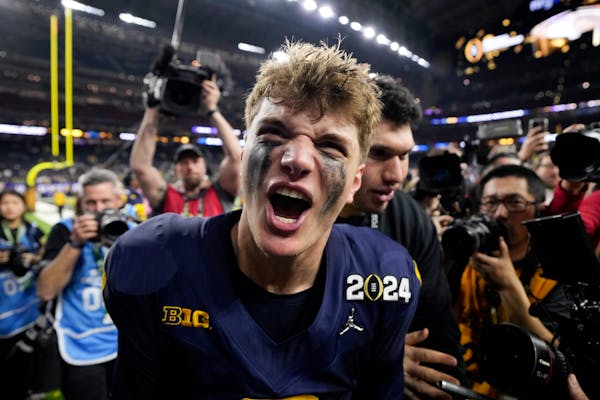What did opera look and sound like when it was invented?
We don't know for certain, but there were intriguing hints in Bold North Baroque Opera's performance of Marco da Gagliano's "La Dafne" at the Twin Cities Early Music Festival on Saturday evening.
"La Dafne" was first staged in 1608 in Mantua, Italy, a decade after Jacopo Peri wrote the first-ever opera. The venue for its premiere was a room in a duke's palace, a space far smaller than the grand auditoriums where opera is typically staged nowadays.
The main hall at the Summit Center in St. Paul re-created some of the intimacy of those early opera performances. A makeshift proscenium framed the stage area, with curtains pulled by stage technicians. The sets were hand-painted on canvas by Bold North's artistic director Phillip Rukavina, and were shifted by cast members between the six scenes of the action.
The seven members of the orchestra played instruments of Gagliano's period and sat at floor level in front of the stage, as the composer stipulated.
Modern-day lighting effects and digitally generated imagery were of course unknown in the early 17th century, so the visual trickery of "La Dafne" was re-created in pantomimic fashion. A furry monster with protrusive eyeballs cavorted onstage before Apollo slew it with an arrow, and Daphne was "magically" morphed into a tree by some tricksy trompe l'oeil with a cutout sapling.
Musically there were some notable performances. Soprano Janna Kysilko made a pert impression as Cupid, firing off her amorous arrows and singing vibrantly.
As her mother, Venus, mezzo-soprano Sahar Hassan was rich-toned and authoritative, while soprano Sarah Jackson's appealingly voiced Daphne made one wish the part were bigger.
Both Bill Pederson's Apollo and countertenor Joe Nelson's Thyrsis were solid foils to the female characters, and brought gravitas to the opera's melancholy, love-thwarted conclusion.
Marco Real-d'Arbelles led the small orchestra, from which the gangling neck of Rukavina's theorbo protruded. Much of the delicacy and sensuality of Gagliano's score came through, and the string players stayed gallantly in tune in the clammy conditions of the Summit Center, which has no air conditioning.
"La Dafne" runs for 70 minutes, and in normal conditions an intermission is probably inappropriate. Saturday evening's, though, was enlightened with a cameo appearance by virtuoso recorder player Cleá Galhano. Her delightfully chirpy account of a sonata by Dario Castello had the freshness and piquancy of a light sorbet between main courses.
Are operas like Gagliano's worth doing, or are they best left in the obscurity of dusty music libraries?
Bold North Baroque Opera's performance of "La Dafne" gave an unmistakable answer: Niche pieces can be fun in themselves, and cast a fascinating light on how the better known works surrounding them developed.
The new company has ambitious plans for bringing more baroque opera to the Twin Cities in the future — works by Monteverdi, Cavalli, Purcell and Handel have been mentioned. It's to be hoped they find a way to do it.
Terry Blain is a freelance classical music critic for the Star Tribune. Reach him at artsblain@gmail.com.
